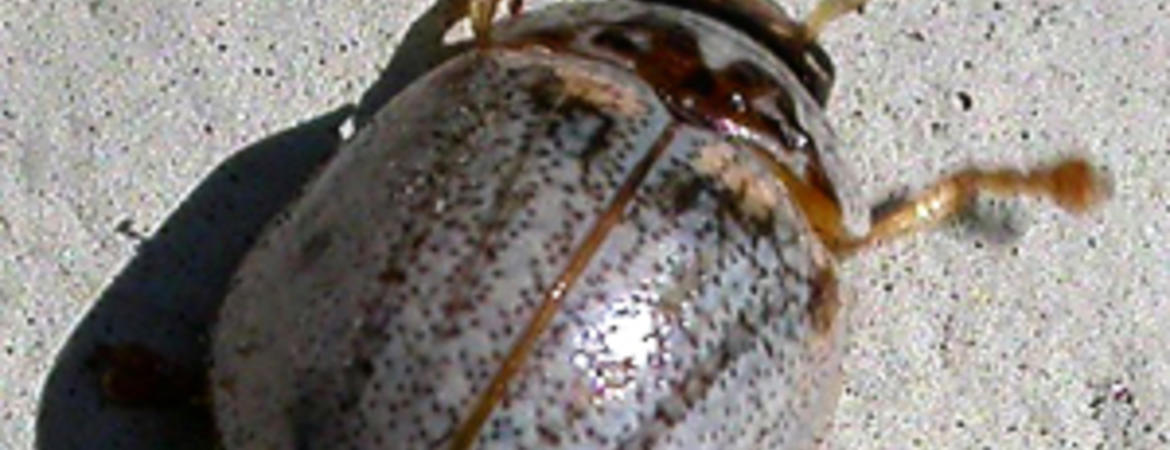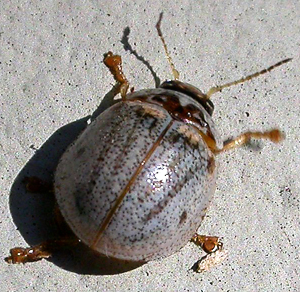

The Situation: A large number of introduced Eucalyptus pests have invaded California over the last ten years, including boring beetles, psyllids, gall forming wasps, and leaf chewing beetles in the family Chrysomelidae. The blue gum psyllid was the first to become a pest of ornamental eucalyptus, silver-leaved mountain gum or baby blue gum, and Eucalyptus pulverulenta Sims. The blue gum psyllid was not a pest for long, however, due to the introduction of Australian parasitoids.
Eucalyptus leaf beetle is a new pest of ornamental eucalyptus and was introduced from Australia into southern California around 2003. It is not easily controlled by native parasites or predators. In Australia it is commonly known as one of the eucalyptus tortoise beetle species. It is known as an outbreak pest of commercial E. globules, blue gum plantations in southeastern Australia.
Damage: Eucalyptus leaf beetle prefer to oviposit in batches of 30-60 eggs on younger foliage; whereas, adults will feed on older foliage. Hatchlings feed gregariously on the younger foliage causing damage to leaf edges that resembles caterpillar feeding damage, and it can be quite extensive. The immature stages of Eucalyptus leaf beetle are daytime feeders. In contrast, the Australian tortoise beetle, Tracymela sloanei, feeds at night.
The Eucalyptus leaf beetle mostly feeds on landscape planted blue gum in San Diego, Orange and Riverside Counties. Recently, however, it has become a pest of field grown baby blue eucalyptus grown for cut foliage in northern San Diego County.
Identification: Both beetle species are similar in size, about the size of a ladybug. Eucalyptus leaf beetle adults are gray to reddish brown and the larvae are greenish-gray. The Australian tortoise beetle adult and larvae are both dark brown.
Research: At present, research on pesticide efficacy against Eucalyptus leaf beetle is lacking. Based on studies of these pests in field nurseries and eucalyptus stands, long–term control can be achieved by a soil drench application of the systemic neonicotinoid insecticides imidacloprid (Merit or Bayer Advanced 12-month Tree & Shrub Insect Control) or clothianidin (Arena—for commercial applicators only). Foliar sprays of broad-spectrum insecticides such as the carbamate carbaryl (Sevin) or pyrethroids, including cyfluthrin (Tempo) and permethrin (Astro, Dragnet) are also effective against adults and larvae. It is very important, however, to remember that the blue gum psyllid is under excellent control by beneficials, and that these products may well interrupt biological control and cause resurgence of the psyllid to serious pest status.
Want more? Go to the CISR website for more on the Eucalyptus Leaf Beetle